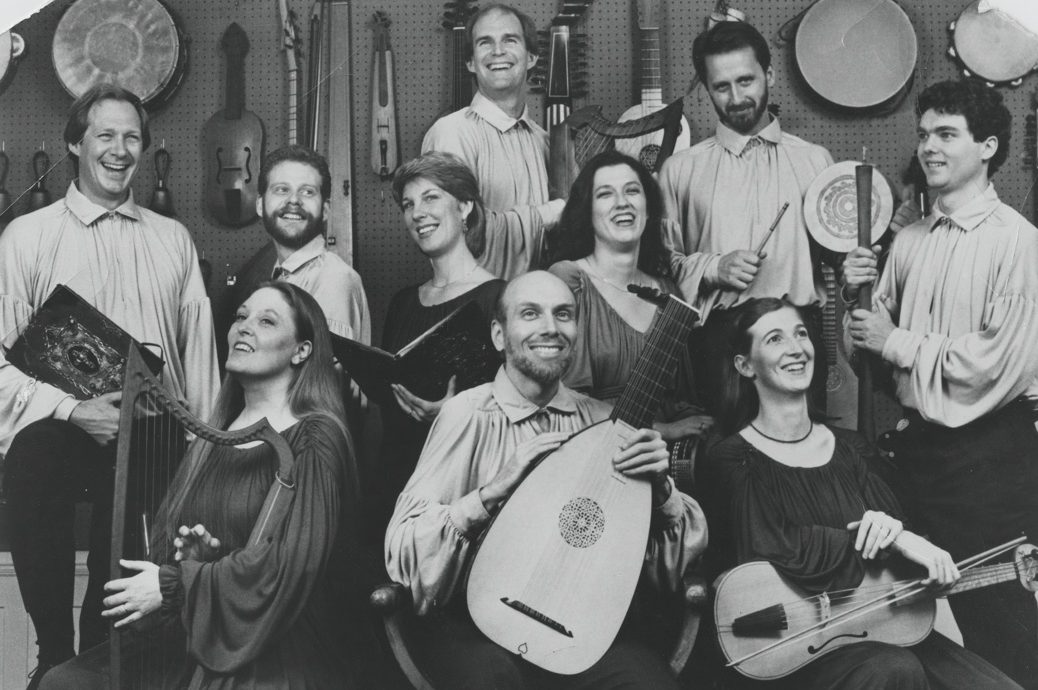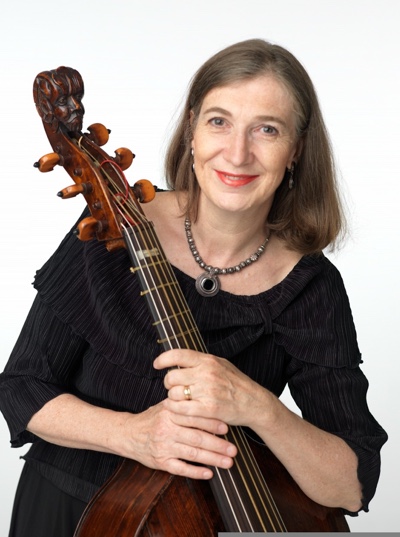
By Rosamund Morley
On June 15, the world and the Waverly Consort lost a towering figure in early music, Waverly co-founder Michael Jaffee. Michael and his wife and collaborator, Kay Jaffee, met as graduate students in musicology at New York University in 1959 in a class taught by the pioneering scholar Gustave Reese, whose comprehensive knowledge of the sources of European medieval and Renaissance music was legendary. At that time, the availability of recordings of the repertoire they were studying was scant, and when Reese found out that there were students in the class who could sing and play, he asked them if they would mind making a tape of “just one or two little chansons” previously unrecorded so that the whole class could hear them.

“For Reese, music without sound was unthinkable,” Kay Jaffee recalls. “So he really started the Waverly Consort off. Soon, we began to meet on our own to read through music for fun at our little West 70s apartment. Before long, we had worked up a concert. Reese came to our first real performance and beamed proudly from his seat on the aisle.”
This was the birth of the Waverly Consort. From these student days and the Waverly debut performance at Carnegie Hall in 1961 until this past Saturday, it was the musical mission to which Mike dedicated himself for 60 years.
Mike once told me that his life changed when, on his first trip traveling around England, he heard several Cathedral choirs singing the astonishingly beautiful 16th-century music for which they are famous. The gorgeous straight tones of the voices and the purity of the intervals they sang, making the tensions and resolutions of the polyphony so thrilling, transported him. He gave up his guitar for the lute and vowed to make sure that this music, and all early music, would become as well known as the standard repertoire of orchestras and chamber-music societies.
Mike grew up in Brooklyn, but his mother and uncles had been refugees in Mexico City, so he learned and became fluent in Spanish. Perhaps that’s why he and Kay decided to create a semi-staged performance of the Cantigas di Santa Maria that was a wild success and toured throughout the U.S and Latin America. The New York Times review of the premiere said, “Anyone who can beg, borrow or steal a ticket for the Waverly Consort” needs to do so quickly.
I never heard that program, but people still remember it well, with the same reverence as those who recall hearing Noah Greenberg’s Play of Daniel with the New York Pro Musica in the ’50s and ’60s. The Cantigas program really launched the career of the Waverly Consort, and in the ensuing decades they created many visionary programs that toured all over the world. In my first season in the mid-80s, we toured four different programs in about 60 concerts throughout the U.S and on a summer tour to South America.
While serious about our concerts, Mike and Kay never espoused an “all work and no play” ethic. Tours with Waverly were like happy family trips, planning our drives to see as many sights on the way — from art museums to natural beauties like the Grand Canyon — and arriving at each new venue in plenty of time to focus, do sound checks, and touch-up rehearsing. Once Mike and Kay organized a trip to Cusco and Machu Picchu for us all, squeezed into three available days between concerts in Lima and Santiago. In Alaska, we watched the start of the Iditarod from our hotel windows and went one afternoon to try dog sledding, all arranged by the Jaffees in conjunction with the presenters.
When current events upset our tour schedule, Mike never displayed any of the frustration he must have felt. Rather, he just negotiated the adjustments and calmly carried on, reporting the changes to us all with a smile. For example, having just arrived for a concert in Taipei, he had to change our ongoing travel plans to allow for the delay of our concert there, suddenly postponed because of the funeral of Chiang Ching-kuo. When the demise of Eastern Airlines stranded us in Miami on the way to Lima, Mike simply arranged for the Peruvian presenter to go to the concert venue on the scheduled evening and ask the audience to come back the next night, which they did. And of course tours always involved the adventure of scouting out great places to eat, and after a dinner Mike often had some delicious kind of dark chocolate to offer to everyone.
But performances were always foremost in his mind, and together Mike and Kay crafted gorgeous programs, showcasing in solos the particular strengths of each member of the consort, accompanied by beautifully illustrated program booklets containing a scholarly essay by an expert in the field, along with the usual notes, sources, texts, and translations. In some seasons, they even arranged to tour with a musicologist who gave lively pre-concert lectures in every venue.
Mike was one of the founders of Chamber Music America and Early Music America and wanted to make early-music ensembles as ubiquitous as string quartets in the chamber-music world. He also wanted the Waverly Consort to become a New York City cultural institution that would give opportunity and a reliable income to current and future members of Waverly forever. He required that we hold the time he needed for rehearsals and concerts exclusively for him, and in return he gave us steady work and even benefits. In the current health care crisis, it seems amazing to me that I had both of our children on Waverly Consort health insurance. It distressed Mike so much when he had to end that particular benefit, but the premiums he paid for us all rose so high that even his and Kay’s feverish fundraising pace couldn’t keep up.
Mike and Kay’s particular love of 16th-century repertoire led them to a personnel line up of six singers and four instrumentalists, which they expanded for the beautiful Christmas program and when the repertoire chosen for concerts at the Lincoln Center required larger forces. But the basic 10 musicians allowed them to program music from sublime six-part motets to jaunty instrumental music for a broken consort to make vibrant and uplifting concerts.
While staying completely respectful of the repertoire, Mike always felt his work was pioneering — to build new audiences for the music they loved the most. They gave a start to so many young singers and instrumentalists who are now stars in the historical performance movement; some singers who met in Waverly even married and continued to build vibrant early-music communities in the places they moved to. Everybody who worked with Mike respected his generosity, wry sense of humor, work ethic, visionary programming, and undying love of the music. His contributions to the development of early music in America are incalculable, and he will be sorely missed.
Rosamund Morley is a Brooklyn-based viola da gamba player and member of the viol consort Parthenia, grateful for the more than three decades she spent as a member of the Waverly Consort.
To read the New York Times obituary, go here.

